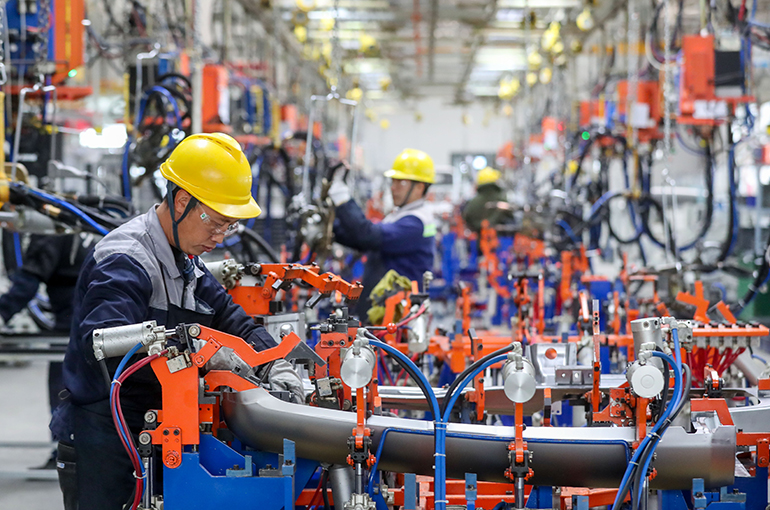 China’s Industrial, Consumption, and Investment Growth Slow in April Amid US Tariff Pressures
China’s Industrial, Consumption, and Investment Growth Slow in April Amid US Tariff Pressures(Yicai) May 19 -- Growth in China’s industrial production, consumption, and investment slowed in April, despite the country’s proactive macroeconomic policies aimed at mitigating the impact of hiked US tariffs.
The added value of China’s major industrial enterprises rose 6.1 percent year-on-year in April, compared with a 7.7 percent increase in March, according to data released by the National Bureau of Statistics today.
Retail sales of consumer goods climbed 5.1 percent last month, down from a 5.9 percent rise in the previous month. Fixed-asset investment grew 4 percent in the first four months of this year, easing from a 4.2 percent increase recorded in the first quarter.
Policy Impact
Since April, China has ramped up efforts to counter external shocks, helping stabilize key economic indicators through improving operations, Fu Linghui, spokesperson for the NBS, said at a press conference today. However, Fu cautioned that international uncertainties persist, and the fundamentals of the national economy still require further consolidation.
A subsidy program launched to promote large-scale equipment upgrades continued to support industrial activity. Last month, the added value of high-tech manufacturing and equipment manufacturing rose by 10 percent and 9.8 percent year-on-year, respectively. Output of 3D printing equipment, industrial robots, and new energy vehicles surged by 61 percent, 52 percent, and 39 percent, respectively.
In the consumer sector, a government-backed subsidy initiative to encourage the replacement of household goods proved effective. Retail sales of home appliances, office supplies, furniture, and communication equipment jumped by 39 percent, 34 percent, 27 percent, and 20 percent, respectively.
Fixed-asset investment also saw gains in key areas due to the accelerated issuance of local government special-purpose bonds. From January to April, infrastructure investment increased 5.8 percent year-on-year. Within this segment, investments in water conservancy, water transport, and aviation rose by 31 percent, 27 percent, and 14 percent, respectively.
External Uncertainties
Tensions between the world’s two largest economies started showing signs of easing a week ago after China and the United States held high-level economic and trade talks in Geneva, Switzerland. As a result, the US has scaled back additional tariffs on Chinese goods to 30 percent, while China has maintained a base tariff of 10 percent on US imports.
This marks a notable de-escalation from the heightened tariff regime introduced during the Donald Trump administration last month, when the US raised base tariffs on Chinese products to 145 percent and China retaliated with tariffs of 125 percent on American goods.
Fu noted that the significant reduction in tariffs is positive for bilateral trade and global economic recovery.
Despite continued global challenges, including rising unilateralism and protectionism, Fu said, the momentum for international cooperation and mutual benefit remains unchanged. He emphasized China’s unwavering commitment to expanding openness and global engagement.
Editors: Dou Shicong, Emmi Laine